eSIM Profile Management Functions
# eSIM Profile Management Functions
Base on the device and profile information
# Device Power-on
After the device powers on and is successfully connected to the platform, the status will be displayed on the Action Records section (Device Fleet -> Device Information), and the following fields information will be updated.
- First connection time: If the device powers on for the first time, this field will be changed as the power-on time.
- IMEI: If only the EID is imported, the information in this field will be updated as per the EID reported by the SDK and its corresponding IMEI.
- EID: If only the IMEI is imported, the information in this field will be updated based on the EID reported by the SDK and its corresponding IMEI.
- The estimated next connection time = last connection time + time interval. For example, if the last connection time is 2023.12.12 12:23:23 and the time interval is 10 minutes, the estimated next connection time should be 2023.12.12 12:33:23. Note: if the profile status is "unknown" or if the interval time has been modified, the time in this field may not be accurate. It is recommended to rely on the actual connection time for accuracy.
- Device Profile status: the status statistical unit is a single eSIM device. The device Profile status is established after judging the device connection time and Profile status. The statuses include enabled, disabled, no profile, idle, and unknown.
- Enabled: There is one enabled Profile (among all the Profiles) in the device, and the device's last connection time plus the set time interval is later than the current time.
- Disabled: There is one enabled Profile (among all the Profiles) There are only disabled profile(s) in the device, no enabled profiles exist, and the device's last connection time plus the set time interval is later than the current time.
- No Profile: No Profile exists in the device.
- Idle: All the profiles in the device are in the "idle" status.
- Unknown: The device's last connection time plus the set time interval is earlier than the current time.
- Single Profile status: single ICCID is the status statistical unit. The statuses include idle, enabled and disabled.
- Idle: Default status after the AC is imported to the platform.
- Enabled: The device downloaded and enabled the Profile. The profile will be synchronized to this status after it is reported by the terminal.
- Disabled: The device downloaded Profile but didn’t enable the Profile. The profile will be synchronized to this status after it is reported by the terminal.
# Profile Download
When the user requests to download a Profile, a Profile download task will be automatically generated.
The user doesn't need to manually trigger it.
Profile download Process:
- After the user requests to download a Profile, the platform will automatically generate a Profile download task.
You can check the task status as "to be proceeded" in the Action Records section.
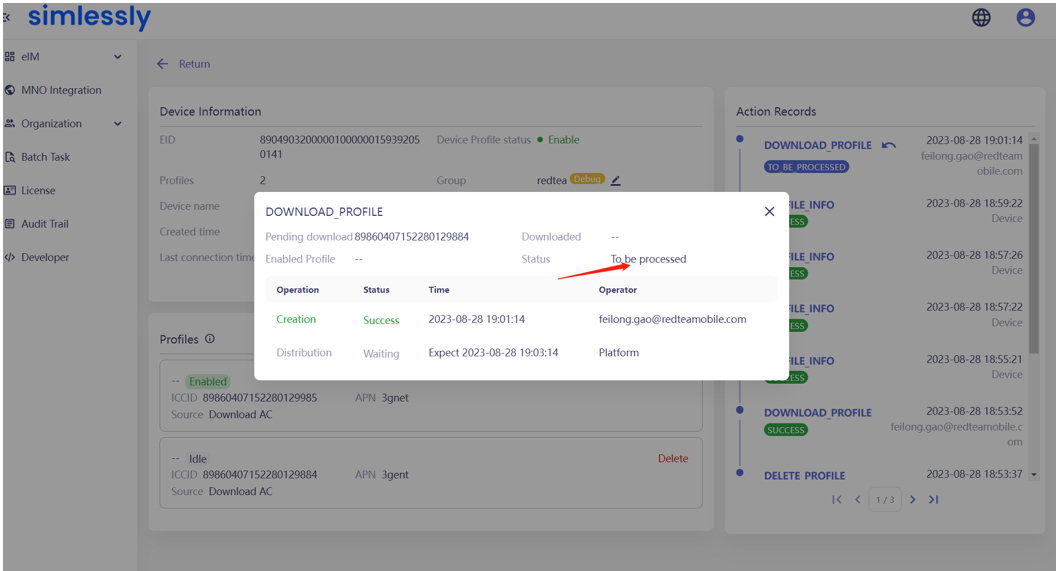
- After the device is connected to the platform at the time configured on the platform, the platform will send
the task to the device, and the task status will be changed to "processing".
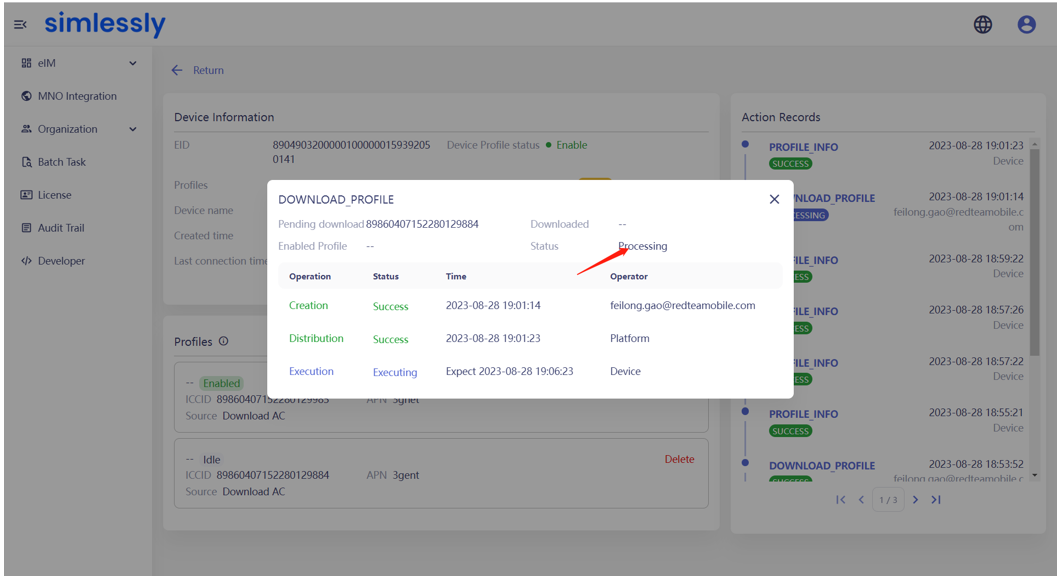
- The process of executing a download task by the device SDK takes about 1-2 minutes, depending on the network
connection duration and network signal strength of the Profile. It may take longer sometimes. Once the device
completes the task, it will report the result of the Profile download. If the download is successful, the task
status will be changed to "Success". If it fails, the task status will be changed to "Failed". You can click
on the task name in the Action Records section to view the failure reason. In case of a download task failure,
the system is designed with a retry mechanism with 10 attempts.

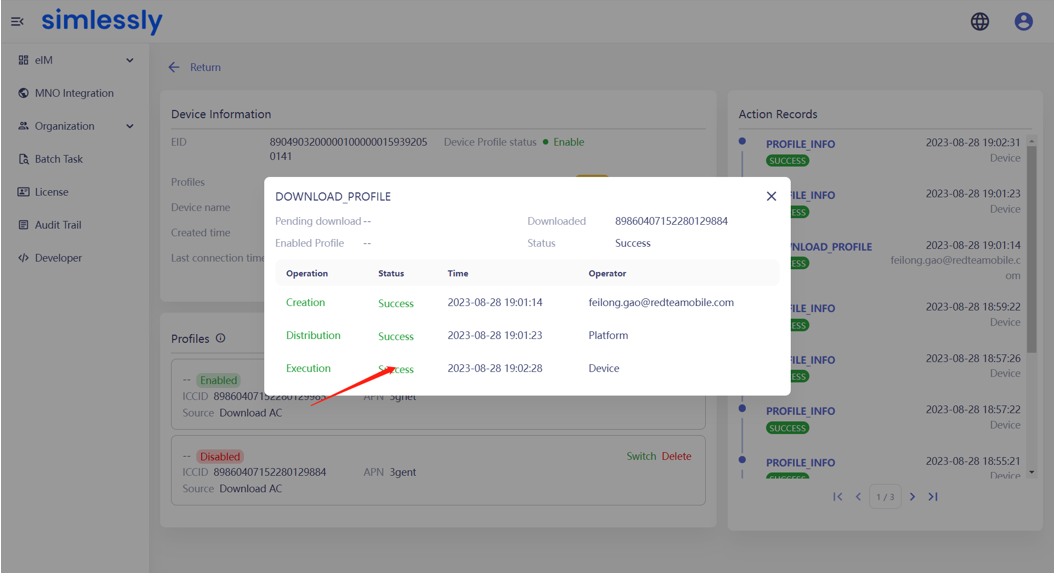
- After successful download, the Profile will be changed from "idle" to "enabled". If you do not want the downloaded Profile to be immediately enabled, you can turn off the Rule 2 “Automatically switch to the newly downloaded profile if an "ENABLE" status profile exists in the eSIM chip” in the Configuration page.
# Profile Switching
Prerequisites:
The target Profile must be in the "disabled" status, and the status of the currently used Profile is not "unknown".
Procedure:
- Enter the Device Fleet page in the navigation tree, find the device downloaded with multiple Profiles, click Detail in the device list to enter the detail page.
- In the Profiles section, click Switch to switch from the current profile to the target profile.
Profile Switching Process:
- After clicking Switch, the system will generate a “switch Profile” task, which will be shown in the Action Records section with the status "to be proceeded".
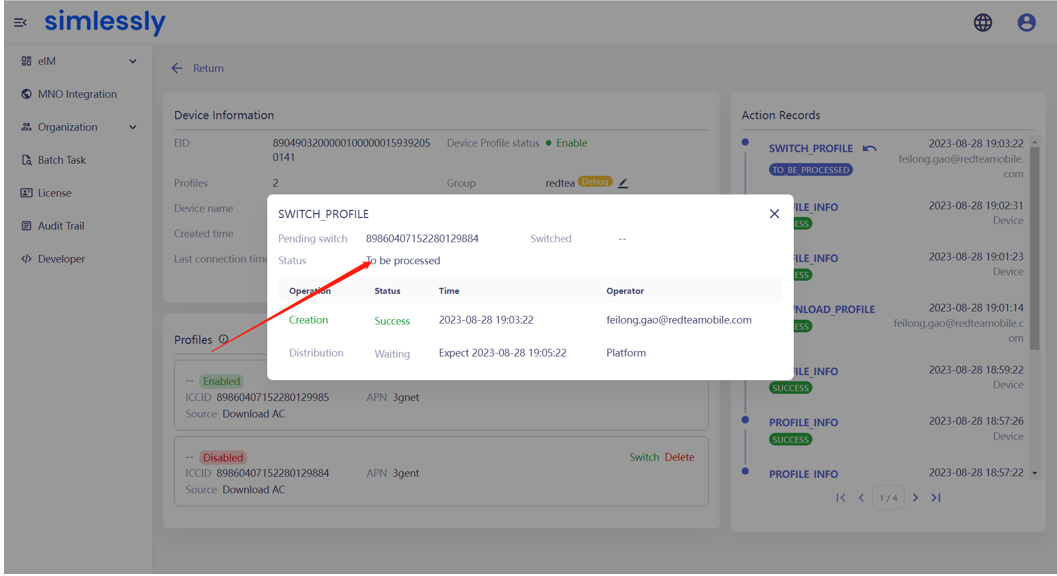
- The process of the profile switching task is consistent with that of profile download task.
- After a successful profile switching, the target profile will be changed from "disabled" to "enabled", and the
previously "enabled" profile will be changed to "disabled". This ensures that only one profile is enabled at a time,
while the others remain disabled.
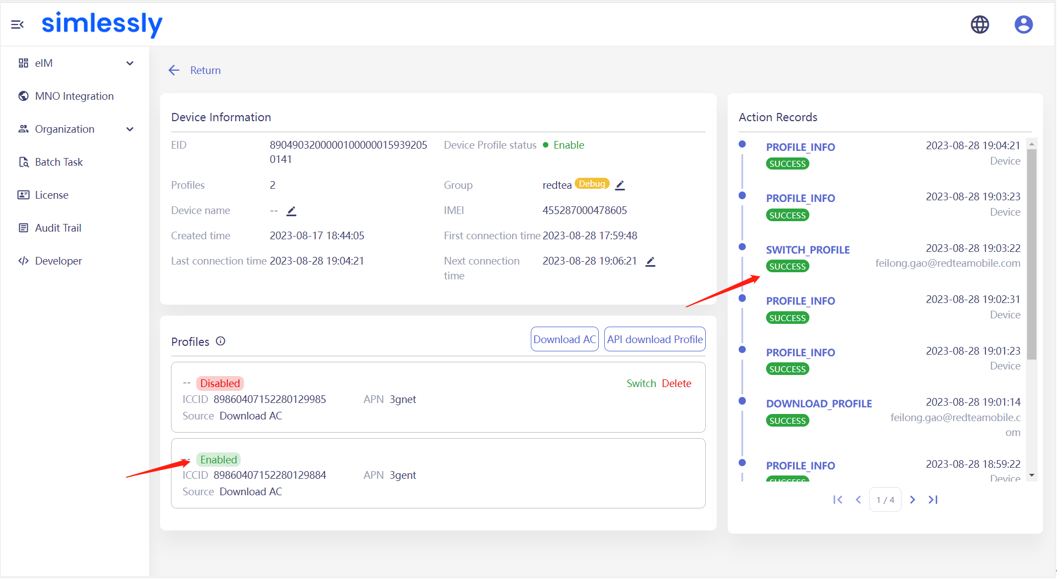
# Profile Deletion
Scenario 1: Delete "idle" profile A profile can be deleted if the status is "idle" and there are no pending or in-progress download tasks associated with that Profile.
Scenario 2: Delete "disabled" Profile "Disabled" Profile can also be deleted.
Procedure:
- Enter the Device Fleet page in the navigation tree, find the device downloaded with multiple Profiles, click Detail in the device list to enter the detail page.
- In the Profiles section, click Delete to delete a disabled Profile.
Deletion Process:
- After clicking Delete, the platform will generate a delete profile task, which will be shown in the Action Records section with the status "to be proceeded".
- The process of the profile deletion task is consistent with that of profile download task.
- After successful deletion, the profile (data) will be removed from both the device and the platform.
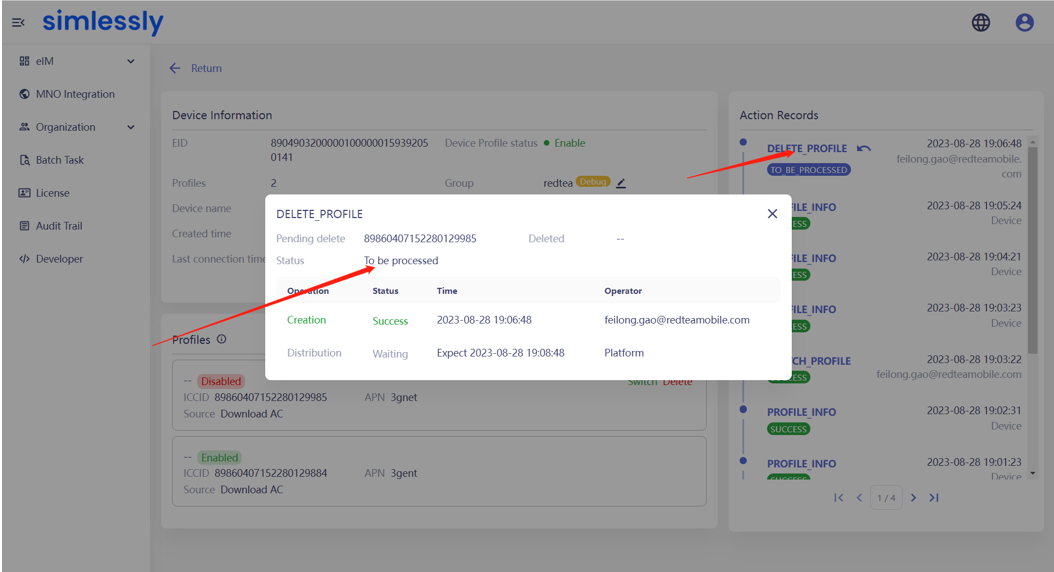

Scenario 3: Delete “enabled” profile If the device is in the debugging group, the "enabled" profile can be deleted from the device. Click here to learn how to become a debugging device.
Procedure:
- Enter the Device Fleet page in the navigation tree, find the device downloaded with multiple Profiles, click Detail in the device list to enter the detail page.
- In the Profiles section, click Delete to delete an enabled Profile.
Deletion Process:
- After clicking Delete, the platform will generate a delete profile task, which will be shown in the Action Records section with the status "to be proceeded".
- The process of the profile deletion task is consistent with that of profile download task.
- After successful deletion, the profile (data) will be removed from both the device and the platform.
Note: If there is no Delete button displayed for an enabled profile, please check whether the rule “Devices in debugging mode support deleting the uniquely enabled Profile” is turned on in the Configuration page.


# Connection Report
Scenario 1: The device periodically reports information based on the time interval configured on the platform.
For example, in the screenshot below, an interval of 3 minutes is configured on the platform. In the Action Records
section of the device details page, you can see records of connection report (task name: Profile Info)
By clicking on the task name, you can see the information reported by the device SDK.
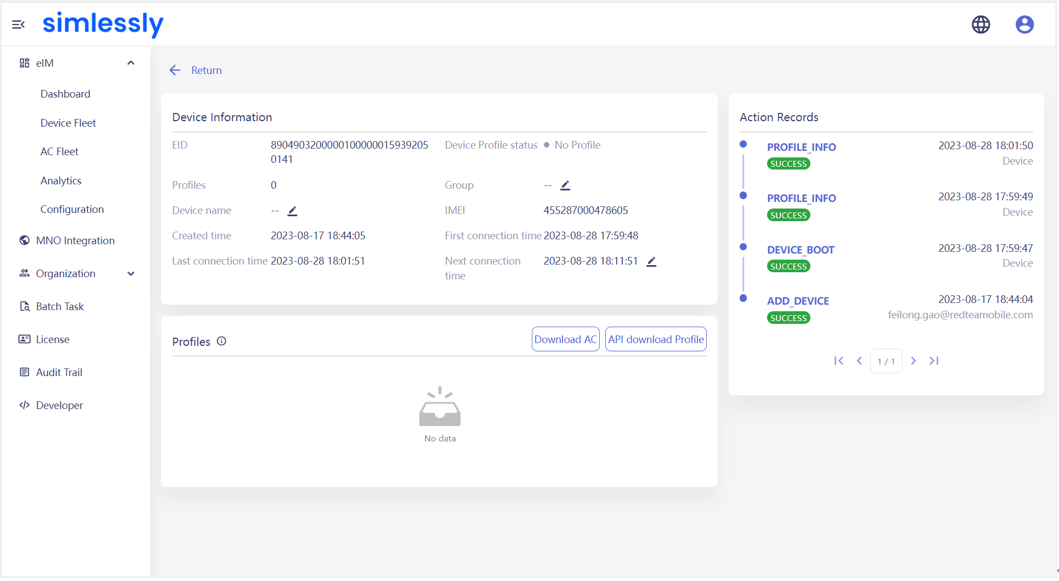
Scenario 2: Network Disconnection or User Enable/Disable Operation When the device is reconnected to the platform after a network disconnection, it will report immediately; additionally, if the user switched profiles and the profile status is changed, it will also report.
The space between the arrows in the below screenshot represents the interval between two periodical reports, it can be seen that the second periodical connection report following the first periodical connection report disappeared, and the connection report at the second arrow is caused by network fluctuations.

